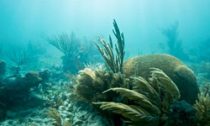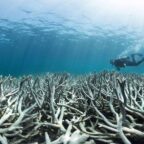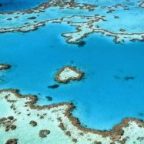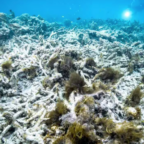
Florida’s coral reef, the only tropical reef in the continental United States, is disintegrating faster than scientists predicted and in a way that will accelerate as the oceans become more acidic, according to new research published Monday.
University of Miami scientists called the collapse of the reef’s limestone framework, a critical habitat for fish, “unprecedented” and “cause for alarm.”
“Lots of scientists think that ocean acidification is not going to be a problem until 2050 or 2060,” says Chris Langdon, a marine biology professor at the University of Miami’s Rosenstiel School of Marine and Atmospheric Science. “This is happening now. We’ve just lost 35 years we thought we had to turn things around.”
Coral reefs around the world have been in decline for decades and the causes are numerous – from pollution and human-caused destruction to bleaching events that occur when ocean temperatures rise. Now acidification, which is happening as the oceans absorb carbon dioxide from the atmosphere, may turn out to be an even more deadly threat. Corals can recover from bleaching events but ocean acidification is expected to increase as the climate warms.
“These bleaching events are an acute problem caused by hot weather spells,” says Langdon. “Acidification is chronic; it lasts 365 days out of the year. This is one reason we have to reduce carbon dioxide emissions sooner than later.”
For the study, Langdon and a team of researchers collected water samples in 2009 and 2010 along a 124-mile (200-kilometer) stretch of the Florida reef, from north of Biscayne Bay to the Looe Key National Marine Sanctuary in the Atlantic Ocean, about five miles off Big Pine Key in the Lower Keys. Looe Key was named for the HMS Looe, which ran aground there in 1744.
The samples show the limestone, the reef’s skeletal foundation, breaks down in the fall and winter months faster than coral can produce new limestone in the spring and summer. Consequently, parts of the reef, especially in the Upper Keys closer to Miami, have already reached what Langdon calls the “tipping point.”
“The reef needs a certain amount of carbonite production every year to stay in place,” he says. “if it’s in excess of that, the reefs grow. When it reaches zero, they are holding even. When it switches to negative, that’s when they start wasting away.”
The Florida reef is estimated to be worth $7.6 billion in revenue from tourism and the commercial seafood industry, according to University of Miami figures.
The study, published in Global Biogeochemical Cycles, a journal of the American Geophysical Union, was the first of its kind to track collapse of the reef’s structure over a long term. The study did not determine if the Upper Keys are more vulnerable to disintegration because they are closer to 2.6 million people who live nearby, or because the water temperatures are slightly cooler in the northern Keys. The colder the water, the more CO2 dissolves.
Globally, reefs occupy less than one percent of the ocean floor, but they provide habitat for a quarter of the world’s fish. Australia’s Great Barrier Reef, a World Heritage site, is so vulnerable to ocean acidification that scientists now predict large parts of the world’s largest reef will have died off by the mid-2030s. An Australian Research Council aerial survey of the reef, announced last week, showed massive bleaching events along the reef this year.
Along with other researchers, Langdon has been working for several years to find a type of coral that can adapt and survive to new ocean conditions. Those stronger corals could be transplanted onto diseased reefs and help them recover. Now he says the new findings raise serious concerns about the prospects for success of those efforts.
“Finding more adaptive species isn’t going to be the ultimate solution,” he says. “The only way to prevent that is to prevent the build-up of CO2 in the atmosphere.”















Social Profiles